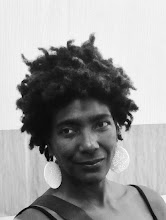Forest of Swords is a documentary in progress by Filmmakers Helen S. Cohen and Mark Lipman. The film is an intimate portrait of the recovery of Dr. Grace Dammann and family from catastrophic injury. The filmmakers have followed Grace and her family on camera from the day of her first discharge from the hospital. One wouldn't think of this material as rejuvenating or humorous but in the hands of this subject and these filmmakers both are true. Through this handling emerges a picture of what resilience is and how it nurtures healing.
In May of 2008, just before Memorial Day, Grace was in a violent motor vehicle collision on the Golden Gate Bridge. This resulted in a coma for 6 weeks and the shattering of nearly every bone in her body as well as other injuries. Her 14 year old daughter and family dog were present in the vehicle and were physically remarkably unharmed.
To date, Grace has endured over two years of surgery, and rehabilitation medicine. Hers is a story of support through concentric circles of interlocking family and friends. These circles range from myriad individuals (see caringbridge.org) to the global reach of the San Francisco Zen Center, creative luminaries and medical professionals. Grace has lived to tell the story from the edge of life and from both sides of the doctor patient relationship. Both the edges of life and the doctor patient relationship are daily part of the applied bioethics known as clinical medical ethics.
In the fiction "medical film genre" many works turn on physician's needing to heal themselves (FRANKENSTEIN, Whale 1931), becoming better doctors in the process (THE DOCTOR, Roberts 1992), and communities healing physicians (CITY OF JOY, Jaffe 1992). FOREST OF SWORDS brings to the party an important conceptual shift. In Grace's story we see a patient, who happens to be a physician, become her own agent for healing. This is important because deep inside of every seasoned medical doctor is a recognition that every patient is the key to their own recovery or tolerance of illness. The question that FOREST OF SWORDS begins to answer is how patients, clinician's and families might best tap that vital energy.
To be honest Grace's life and persona before the accident was remarkable. His Holiness the Dalai Lama presented Grace the “Unsung Heroes of Compassion" award in 2005 for her care of thousands of AIDS patients, during the era when HIV/AIDS was always a death sentence. How Grace and her family became a part of Isabel Allende's extended family is reflected in the author's 2008 memoir sequel, The Sum of Our Days. Grace's unique spirit and genius inform the power of FOREST OF SWORDS.
Be warned, this is not looking like a film for wimps or the faint of heart. It makes the strong argument that the best hope for resilient recovery from injury is a foundation of a connected and intentional life. If you can swing it you ought to be working on that foundation both before and after injury. As Grace would say "showing up” every day is key. The film, whose working title is Forest of Swords, is about life and recovery.
FOREST OF SWORDS (DVD) (working title) Directed by Helen S. Cohen and Mark Lipman. Open Studio Productions. USA. In production (2010) To learn more about this film, previews and to support its development see http:www.openstudioproductions.com/independent.html
See Film/Bioethics Literacy section on this blog for more on "doctors as patients" and the Medical Film Genre. (Lighten Up Slides: slides 61 and 62 define the medical film genre, slide 70 medical film genre filmography and slide 71 medical film genre videography)
